An art exhibit on the National Mall honors health care workers who died of COVID

Exhibit creator Susannah Perlman poses in front of the “tiny home” on the National Mall in Washington, D.C.
Catie Dull/NPR
hide caption
toggle caption
Catie Dull/NPR
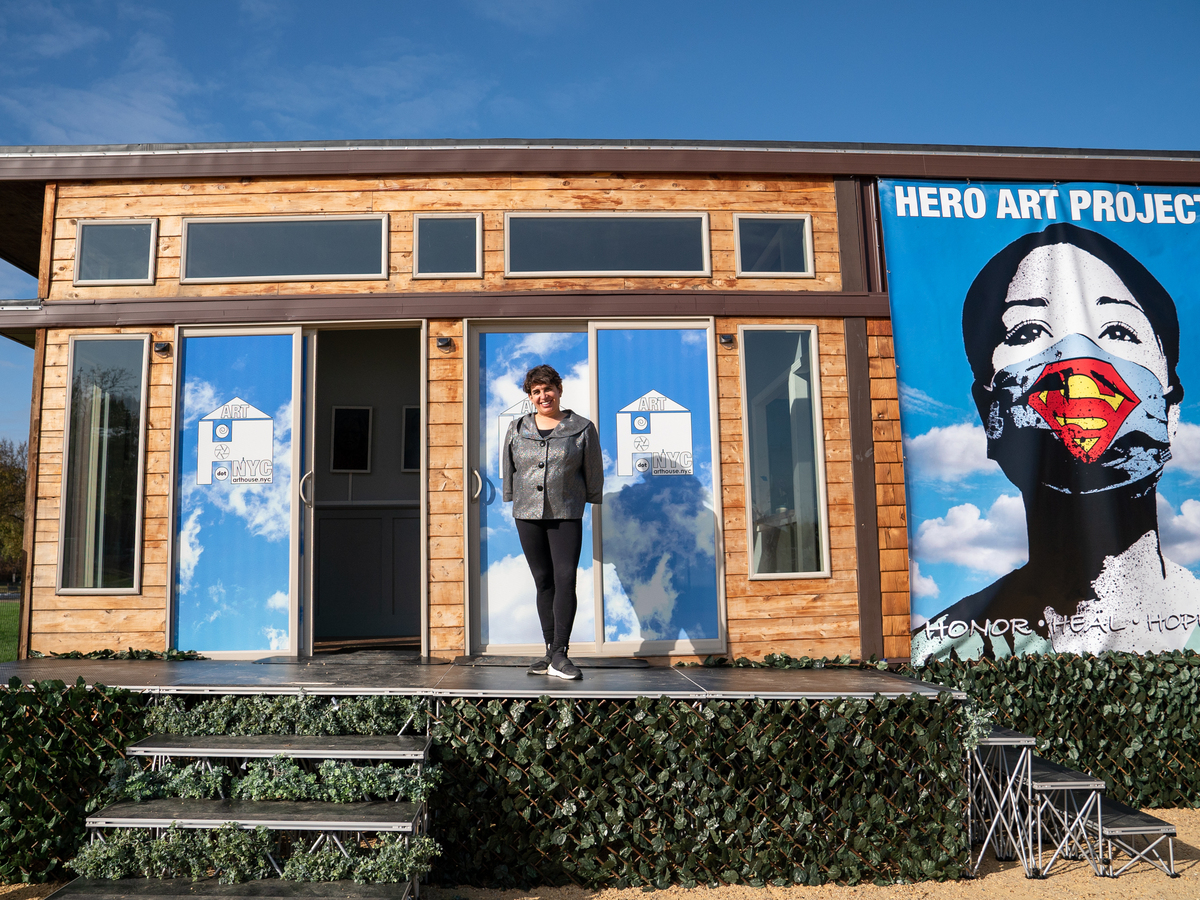
Exhibit creator Susannah Perlman poses in front of the “tiny home” on the National Mall in Washington, D.C.
Catie Dull/NPR
Susannah Perlman remembers her mother Marla’s smile, a big, beaming smile that covered “a couple of ZIP codes.”
Marla died from COVID-19 last year. She was retired and had served as director of volunteers at a hospital in Pennsylvania.
As part of the Hero Art Project, emerging and established artists from around the world have now eternalized the smiles of more than 100 other U.S.-based first responders and health care workers killed by a pandemic they tried to stave off.
NPR caught up with Perlman on the National Mall, where the portraits rotate through digital flat screens in an energy-efficient “tiny home” in the shadow of the Washington Monument and the Capitol building. There are paintings, drawings and digital pieces, some multicolored, others monochrome.

Portraits on various mediums honor health care workers who died of COVID-19.
Catie Dull/NPR
hide caption
toggle caption
Catie Dull/NPR
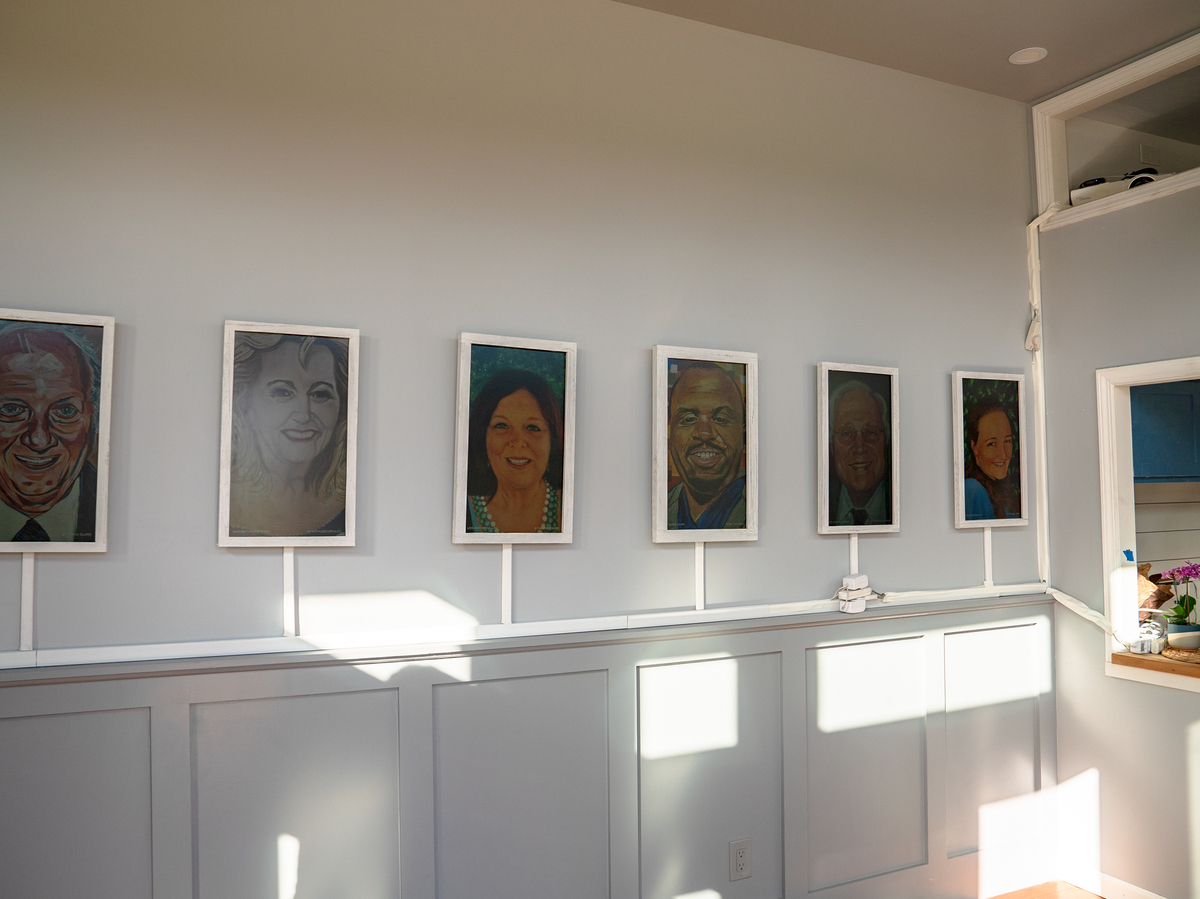
Portraits on various mediums honor health care workers who died of COVID-19.
Catie Dull/NPR
“Here we are, on the National Mall, where you have tons of memorials, and this was a war in its own way, but it hit us in in a different way that we weren’t expecting,” said Perlman, who founded the digital art gallery ARTHOUSE.NYC behind the commissions. “So here is a monument to these individuals who gave their lives, who went to work despite the risks and ultimately paid the ultimate price.”
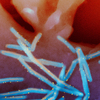
Next to the gallery, visitors stop by a hospitality tent to participate in art therapy projects, such as making origami butterflies — a nod to a Filipino tradition that sees butterflies as a representation of the spirits of the deceased. They can also contribute to a living memorial made up of clouds bearing the names of deceased health care workers, which are then added to the back wall of the house.
Several of the portraits are of Filipino workers, to recognize the significant population of Filipino nurses in the U.S. There are also health workers from India, South America and Europe.
For her digital work representing Washington nurse Noel Sinkiat, artist Lynne St. Clare Foster animated Sinkiat’s short and the background.

Notes
“Noel Sinikiat” by Lynne St. Clare Foster
“It makes it feel like he’s alive,” St. Clare Foster explained. “What I wanted to do is incorporate not just the portrait, just the head … I try to bring in bits and pieces of their their world, their life, their culture.”
Because of the timing of many of these workers’ deaths, at the height of the pandemic, their families “weren’t allowed to mourn the way people normally mourn,” she added, seeing in the portraits another way of honoring the dead.
In another portrait, of Indian-born Aleyamma John, the artist depicts rays shooting out from the nurse’s head.

Notes
“Isabelle Papadimitriou” by Lynne St. Clare Foster
“She’s almost like an angel,” St. Clare Foster said.
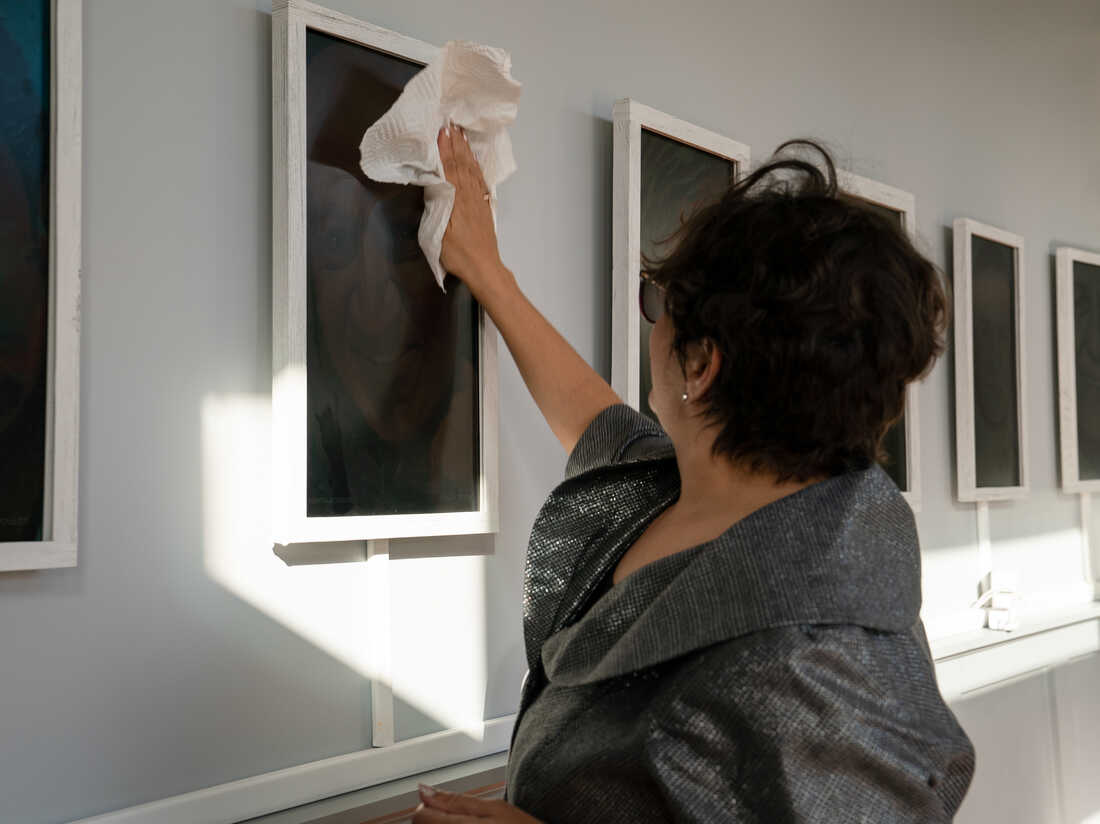
Perlman cares for the portraits in the tiny house.
Catie Dull/NPR
hide caption
toggle caption
Catie Dull/NPR
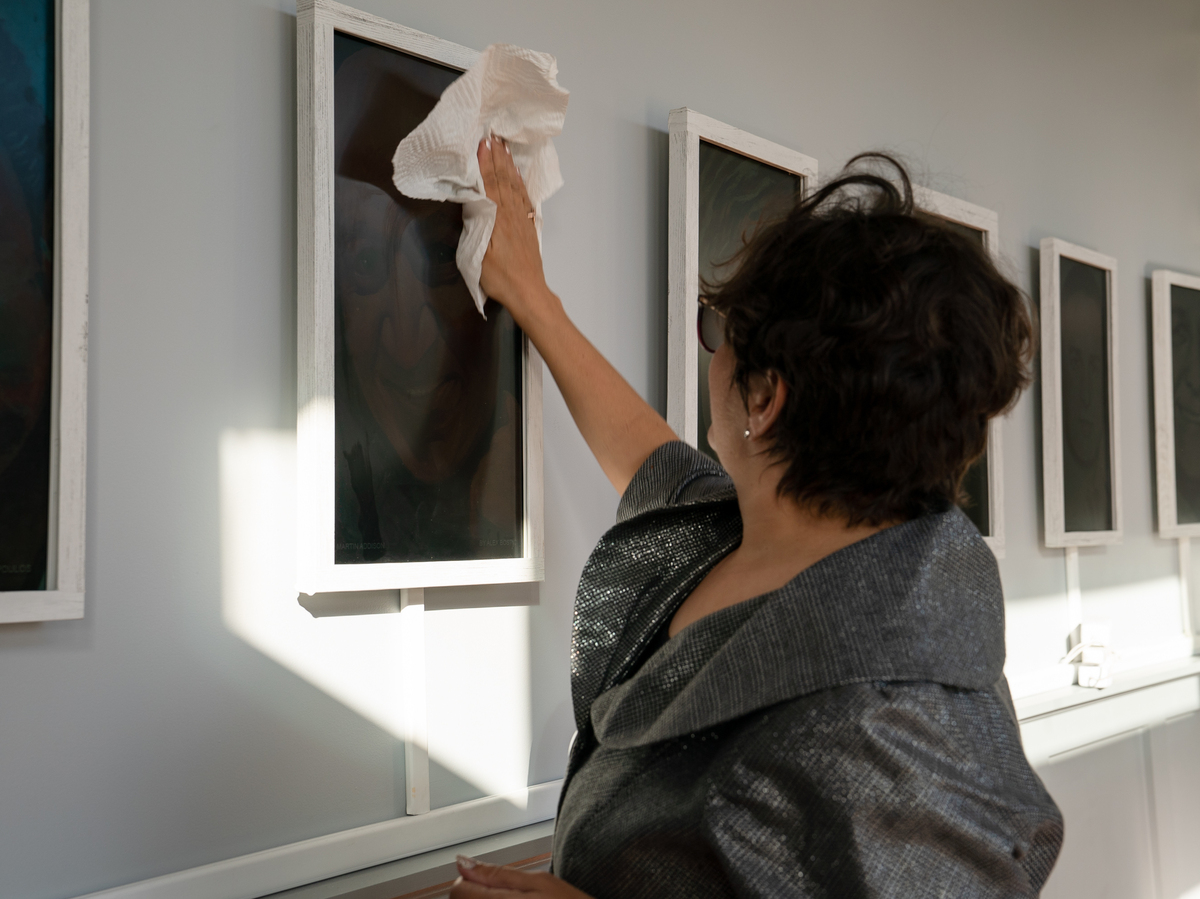
Perlman cares for the portraits in the tiny house.
Catie Dull/NPR
Perlman launched the project after realizing that many of those killed by the pandemic were “just being lost and forgotten; they were just a number.” These commissions, she says, puts faces to the names.
“We’d rarely see these human beings as human lives that were behind these numbers, which I found more heartbreaking than anything else that I can just think of,” she said. “This person had a life, they had history, they had families, they had roots … It’s more of a personal touch than the statistics.”

The prefabricated house bears Marla’s name, but her portrait hasn’t yet made it in the collection because Perlman is still looking for ways to replicate her mother’s “wonderful expression.” The house, she says, “emulates who she was, a beauty, elegance. She would love the natural light.”
After the Washington, D.C., show closes on Nov. 28, the mobile home has stops planned for Miami, Texas, Georgia, the West Coast and New England.

The exhibit will remain on the National Mall until Nov. 28, before traveling to other parts of the U.S.
Catie Dull/NPR
hide caption
toggle caption
Catie Dull/NPR
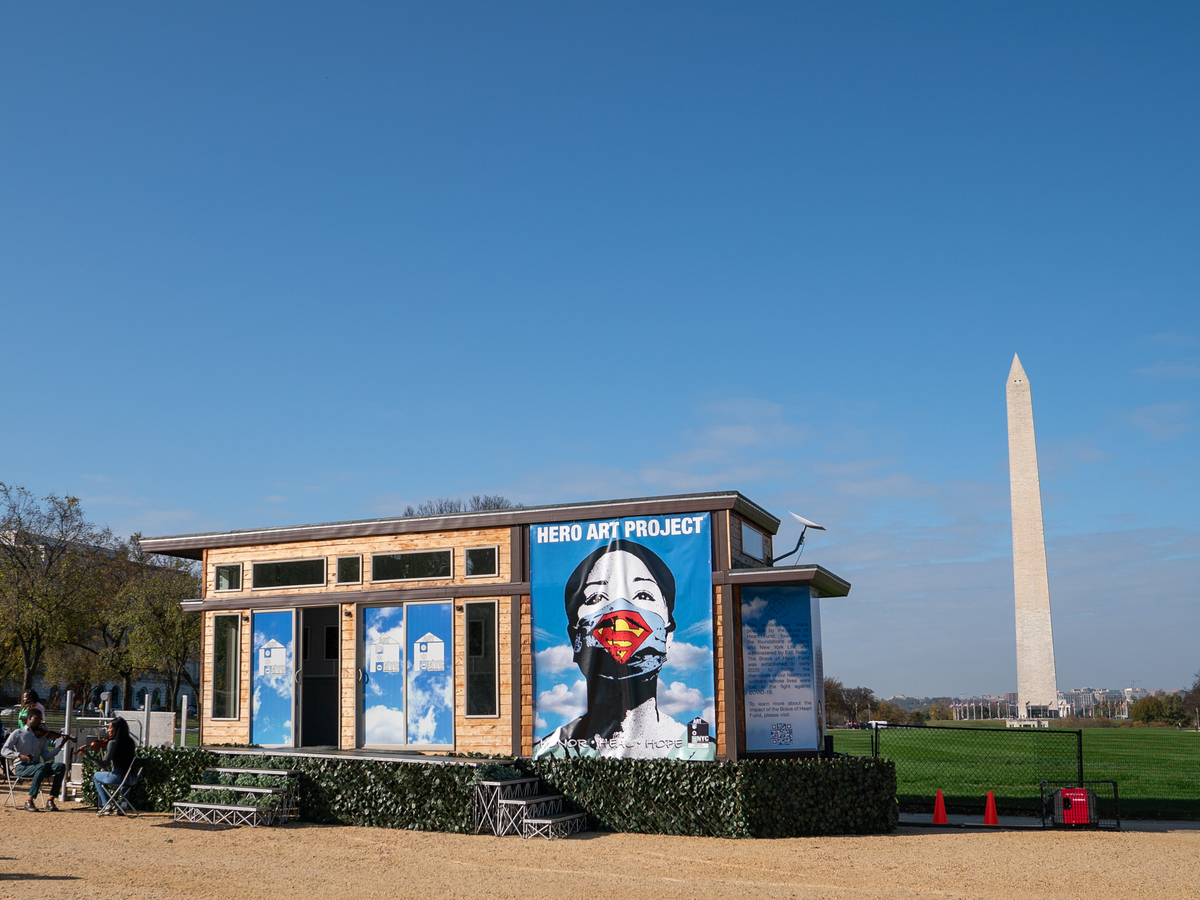
The exhibit will remain on the National Mall until Nov. 28, before traveling to other parts of the U.S.
Catie Dull/NPR
This interview was conducted by Leila Fadel and produced by Taylor Haney.
For all the latest Health News Click Here
For the latest news and updates, follow us on Google News.

